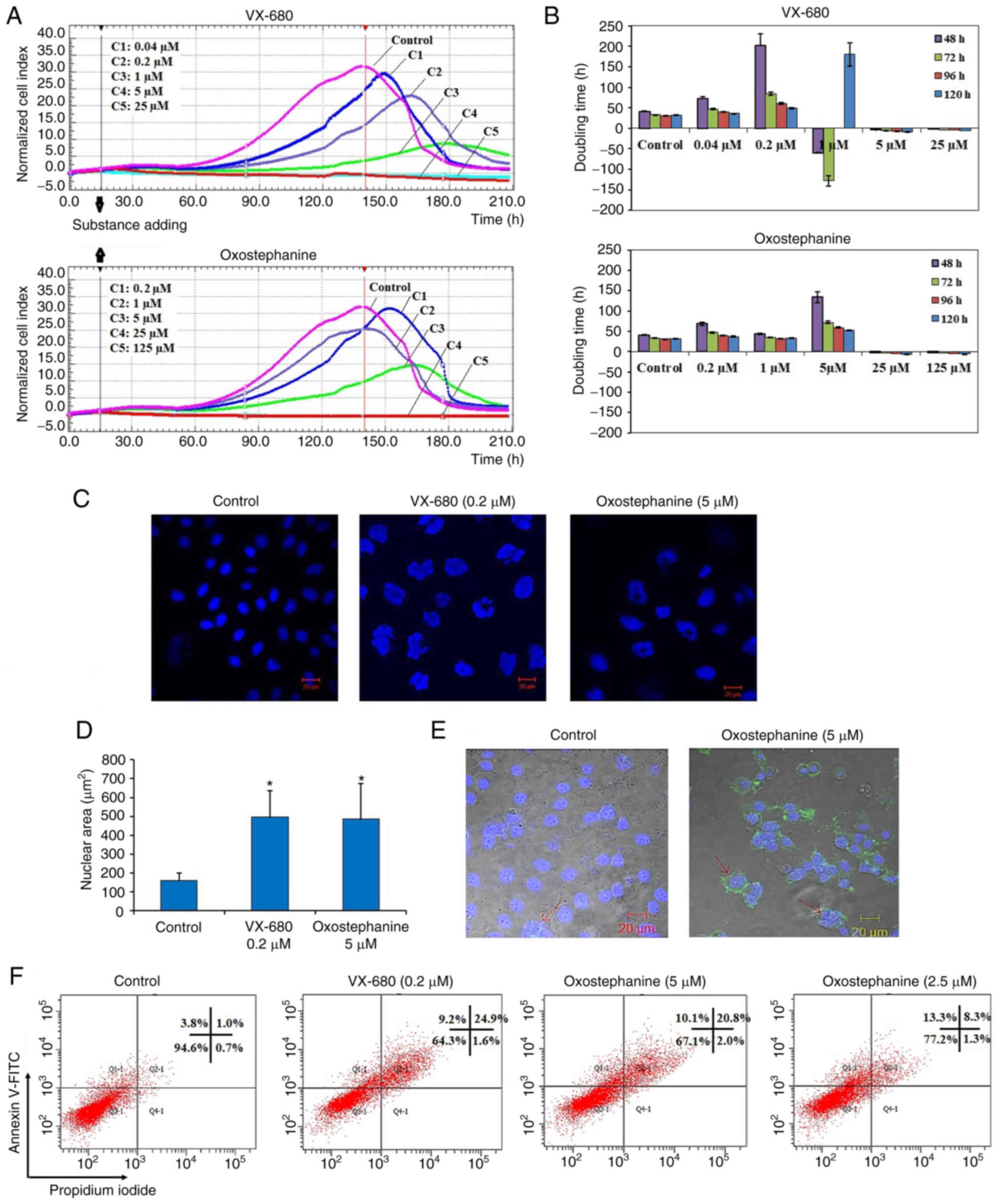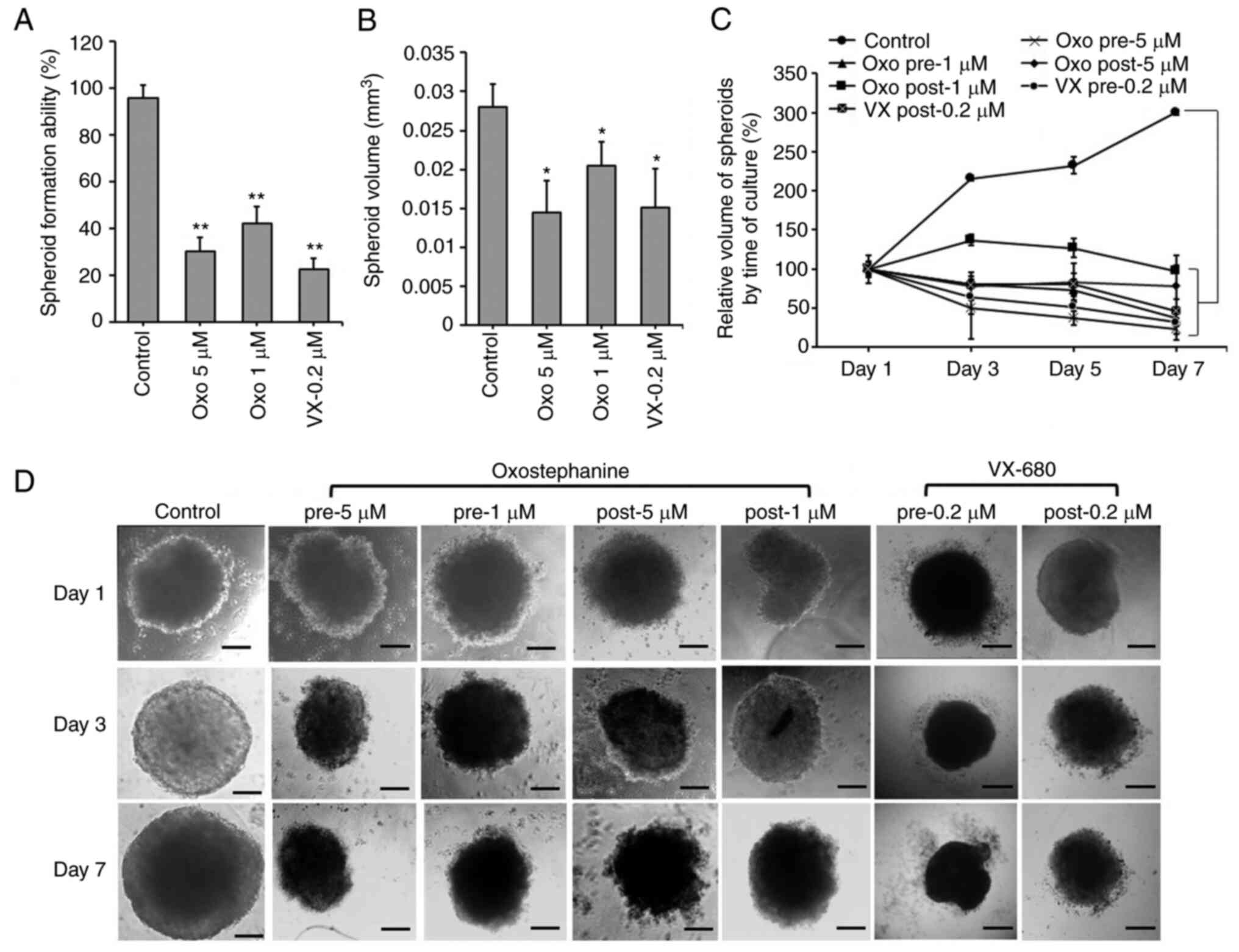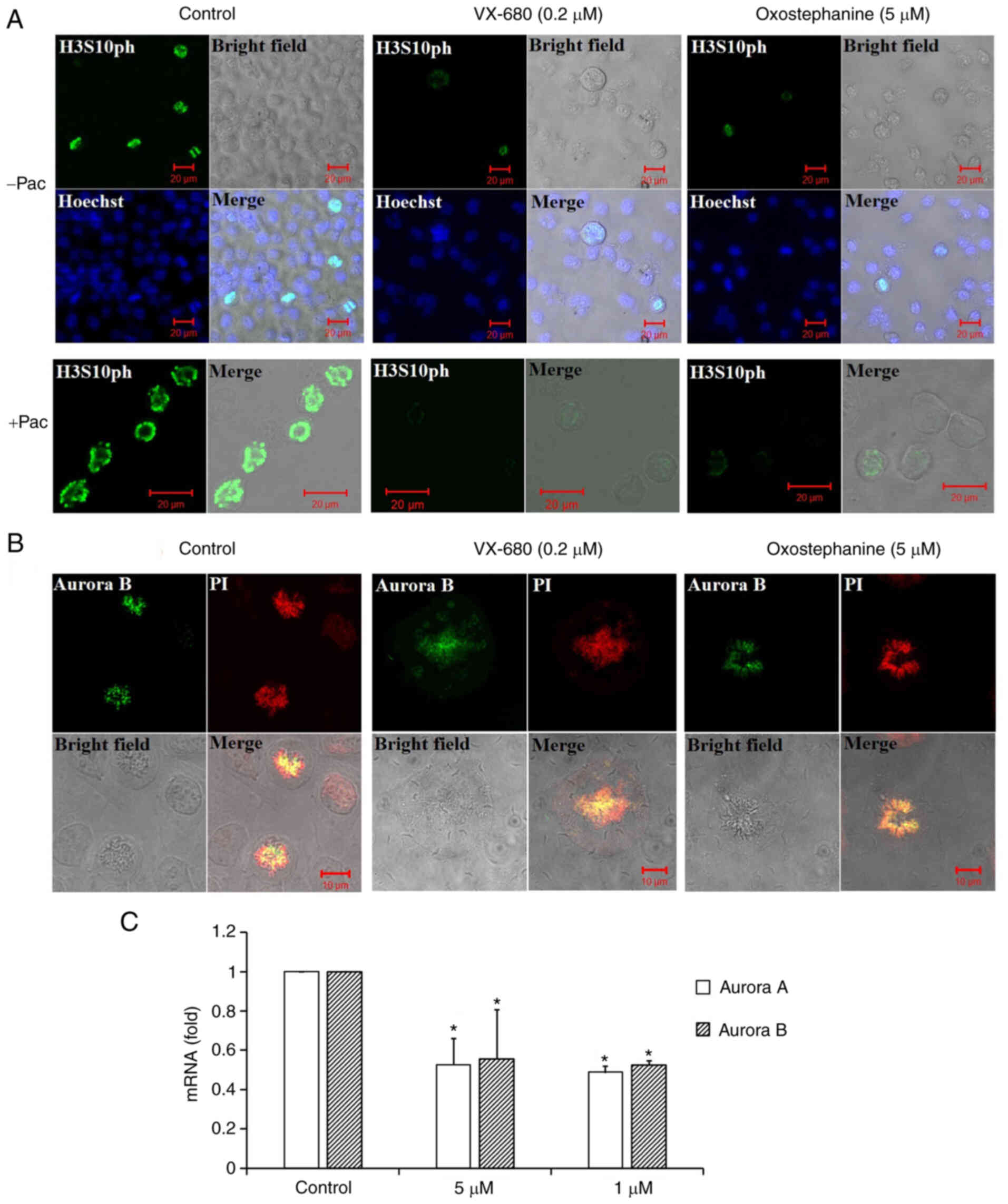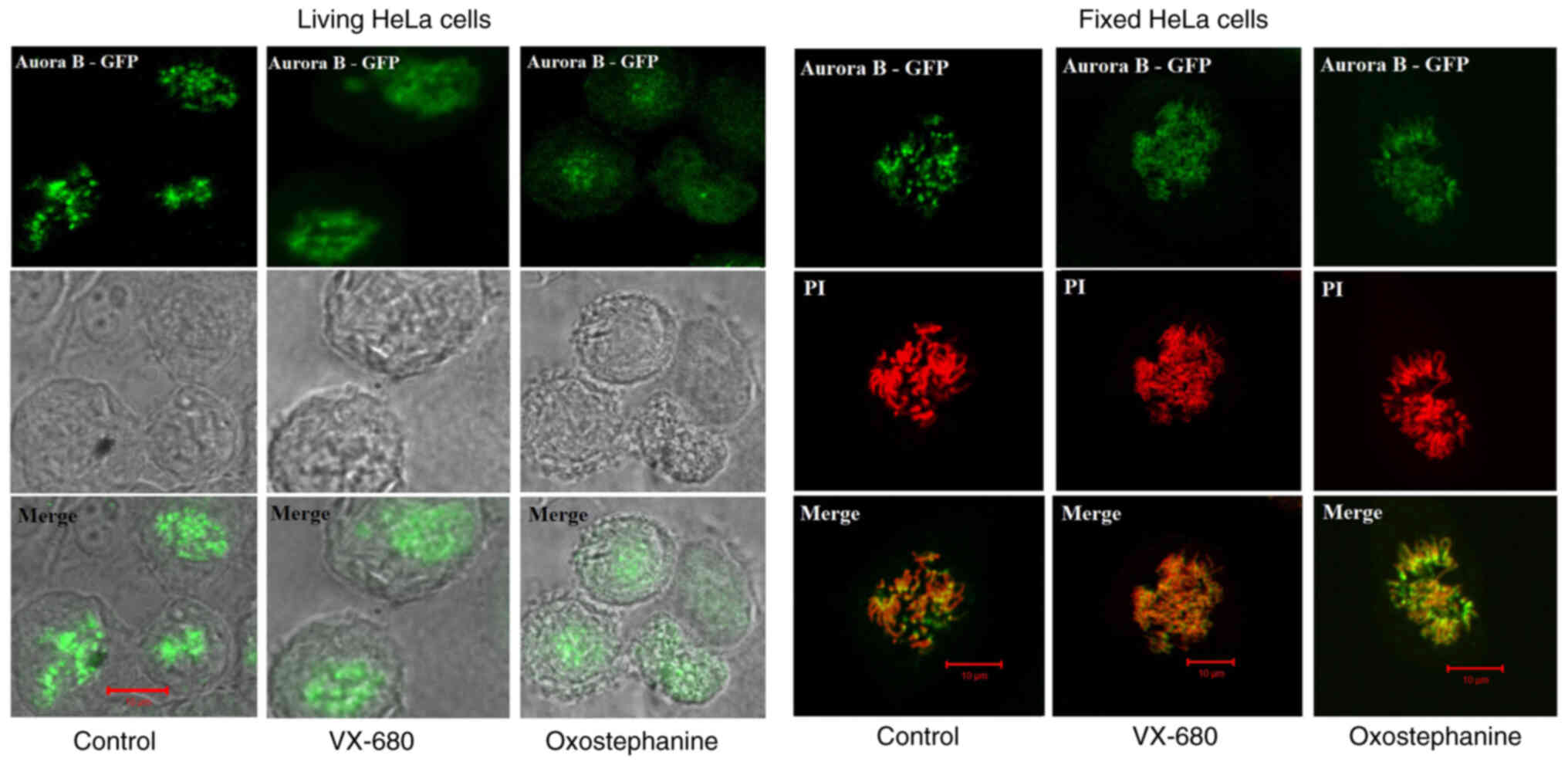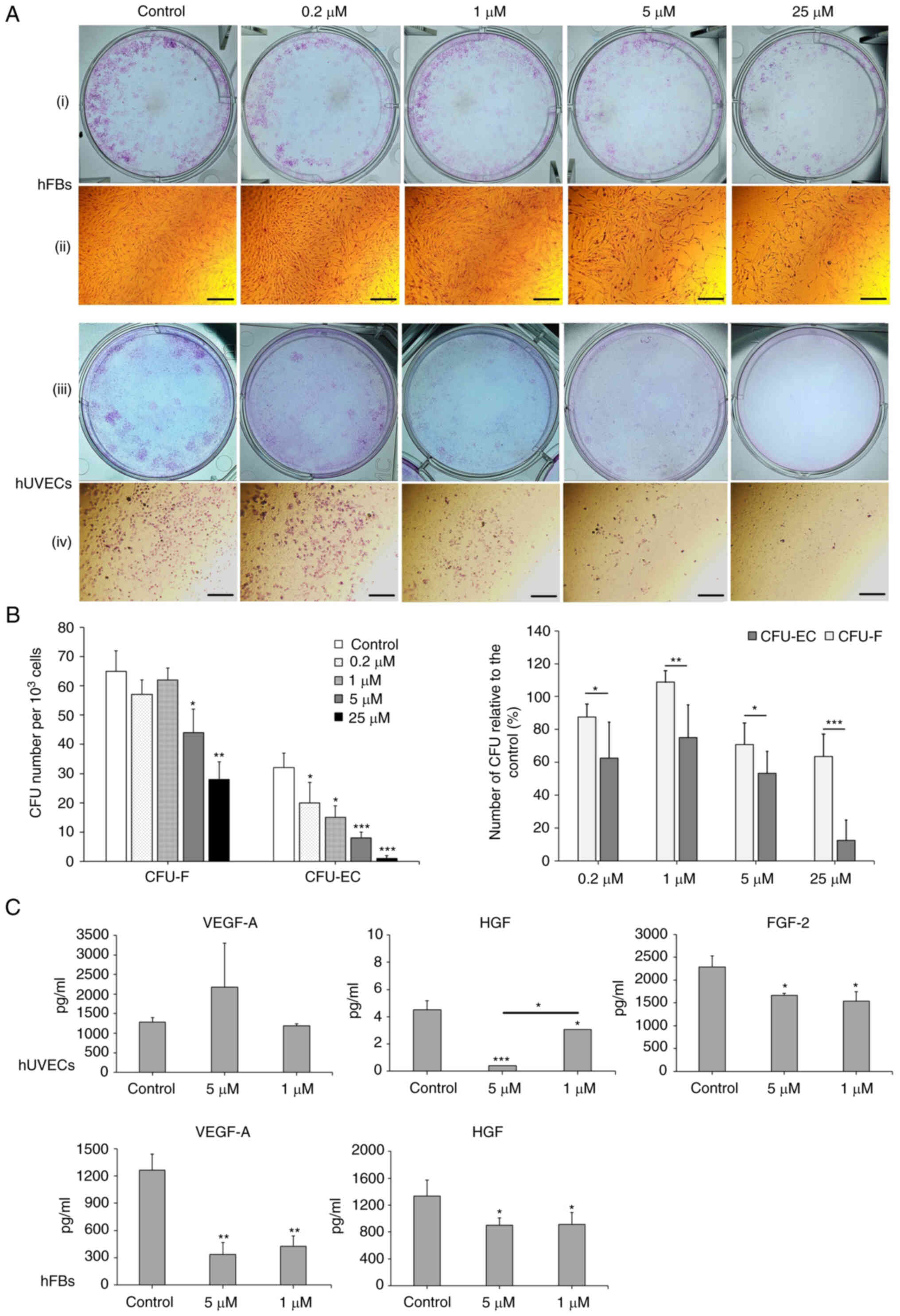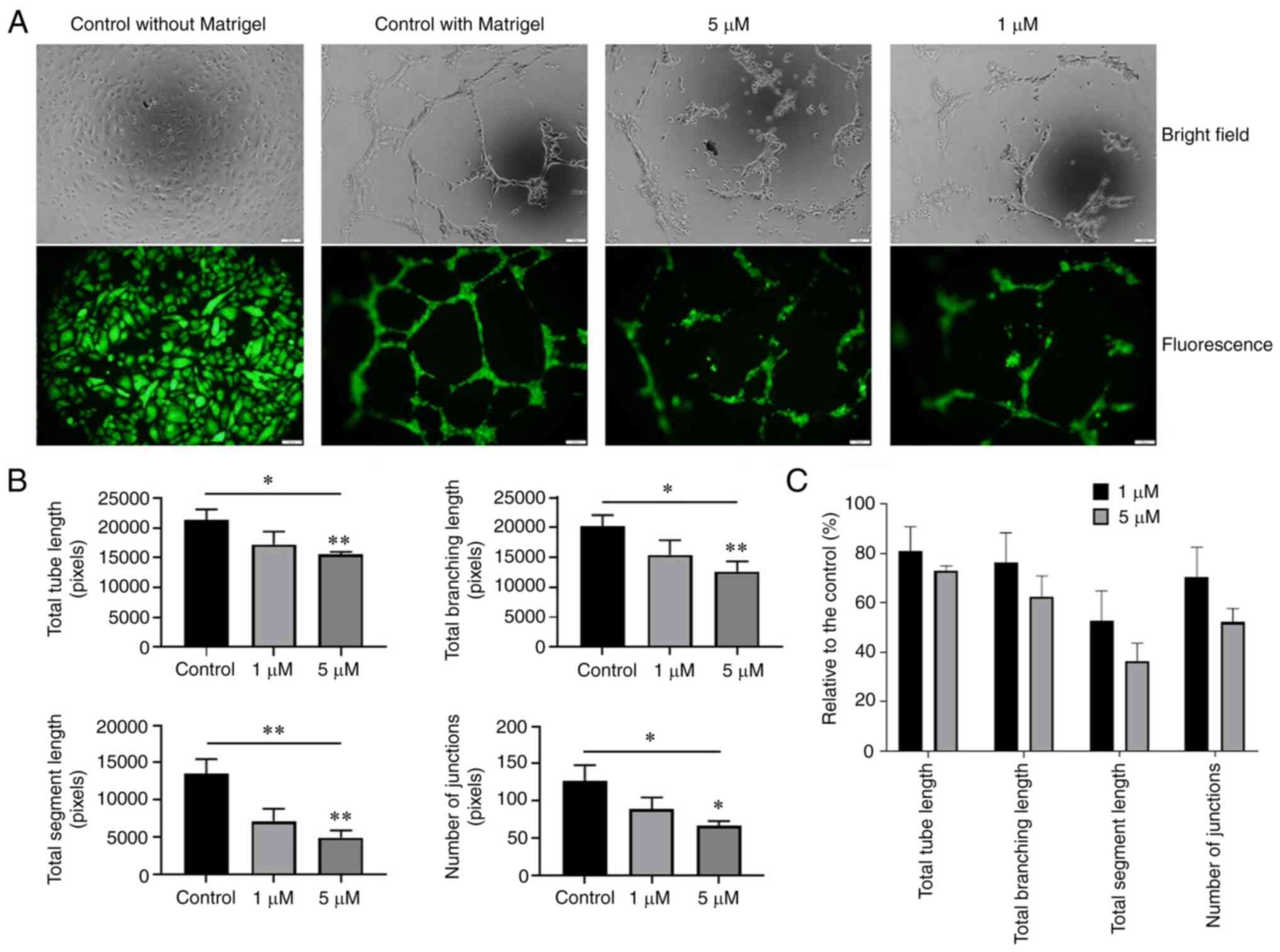|
1
|
Cowley DO, Rivera-Pérez JA, Schliekelman
M, He YJ, Oliver TG, Lu L, O'Quinn R, Salmon ED, Magnuson T and Van
Dyke T: Aurora-A kinase is essential for bipolar spindle formation
and early development. Mol Cell Biol. 29:1059–1071. 2009.
View Article : Google Scholar :
|
|
2
|
Barretta ML, Spano D, D'Ambrosio C,
Cervigni RI, Scaloni A, Corda D and Colanzi A: Aurora-A recruitment
and centrosomal maturation are regulated by a Golgi-activated pool
of Src during G2. Nat Commun. 7:117272016. View Article : Google Scholar : PubMed/NCBI
|
|
3
|
Carmena M, Ruchaud S and Earnshaw WC:
Making the Auroras glow: Regulation of Aurora A and B kinase
function by inter-acting proteins. Curr Opin Cell Biol. 21:796–805.
2009. View Article : Google Scholar : PubMed/NCBI
|
|
4
|
Gurden MD, Anderhub SJ, Faisal A and
Linardopoulos S: Aurora B prevents premature removal of spindle
assembly checkpoint proteins from the kinetochore: A key role for
Aurora B in mitosis. Oncotarget. 9:19525–19542. 2016. View Article : Google Scholar : PubMed/NCBI
|
|
5
|
Shimada M, Goshima T, Matsuo H, Johmura Y,
Haruta M, Murata K, Tanaka H, Ikawa M, Nakanishi K and Nakanishi M:
Essential role of autoactivation circuitry on Aurora B-mediated
H2AX-pS121 in mitosis. Nat Commun. 7:120592016. View Article : Google Scholar : PubMed/NCBI
|
|
6
|
Lan W, Zhang X, Kline-Smith SL, Rosasco
SE, Barrett-Wilt GA, Shabanowitz J, Hunt DF, Walczak CE and
Stukenberg PT: Aurora B phosphorylates centromeric MCAK and
regulates its localization and microtubule depolymerization
activity. Curr Biol. 14:273–286. 2004. View Article : Google Scholar : PubMed/NCBI
|
|
7
|
Mallm JP and Rippe K: Aurora kinase B
regulates telomerase activity via a centromeric RNA in stem cells.
Cell Rep. 11:1667–1678. 2015. View Article : Google Scholar : PubMed/NCBI
|
|
8
|
Rosasco-Nitcher SE, Lan W, Khorasanizadeh
S and Stukenberg PT: Centromeric Aurora-B activation requires
TD-60, microtubules, and substrate priming phosphorylation.
Science. 319:469–472. 2008. View Article : Google Scholar : PubMed/NCBI
|
|
9
|
Wang F, Dai J, Daum JR, Niedzialkowska E,
Banerjee B, Stukenberg PT, Gorbsky GJ and Higgins JMG: Histone H3
Thr-3 phosphorylation by Haspin positions Aurora B at centromeres
in mitosis. Science. 330:231–235. 2010. View Article : Google Scholar : PubMed/NCBI
|
|
10
|
Vader G, Medema RH and Lens SMA: The
chromosomal passenger complex: Guiding Aurora-B through mitosis. J
Cell Biol. 173:833–837. 2006. View Article : Google Scholar : PubMed/NCBI
|
|
11
|
Delacour-Larose M, Thi MNH, Dimitrov S and
Molla A: Role of survivin phosphorylation by aurora B in mitosis.
Cell cycle. 6:1878–1885. 2007. View Article : Google Scholar : PubMed/NCBI
|
|
12
|
Otto T, Horn S, Brockmann M, Eilers U,
Schüttrumpf L, Popov N, Kenney AM, Schulte JH, Beijersbergen R,
Christiansen H, et al: Stabilization of N-myc is a critical
function of aurora A in human neuroblastoma. Cancer Cell. 15:67–78.
2009. View Article : Google Scholar
|
|
13
|
Sun X, Niu S, Zhang Z, Wang A, Yang C, Guo
Z, Hao Y, Li X and Wang X: Aurora kinase inhibitor VX-680
suppresses the proliferation and migration of HUVECs and
angiogenesis. Mol Med Rep. 19:3841–3847. 2019.PubMed/NCBI
|
|
14
|
Romain CV, Paul P, Lee S, Qiao J and Chung
DH: Targeting Aurora kinase A inhibits hypoxia-mediated
neuroblastoma cell tumorigenesis. Anticancer Res. 34:2269–2274.
2014.PubMed/NCBI
|
|
15
|
Tang CJC, Lin CY and Tang TK: Dynamic
localization and functional implications of Aurora-C kinase during
male mouse meiosis. Dev Biol. 290:398–410. 2006. View Article : Google Scholar : PubMed/NCBI
|
|
16
|
Balboula AZ and Schindler K: Selective
disruption of aurora C kinase reveals distinct functions from
aurora B kinase during meiosis in mouse oocytes. PLoS Genet.
10:e10041942014. View Article : Google Scholar : PubMed/NCBI
|
|
17
|
Quartuccio SM and Schindler K: Functions
of Aurora kinase C in meiosis and cancer. Front Cell Dev Biol.
3:502015. View Article : Google Scholar : PubMed/NCBI
|
|
18
|
Bavetsias V and Linardopoulos S: Aurora
kinase inhibitors: Current status and outlook. Front Oncol.
5:2782015. View Article : Google Scholar
|
|
19
|
Inamdar KV, O'Brien S, Sen S, Keating M,
Nguyen MH, Wang X, Fernandez M, Thomazy V, Medeiros LJ and
Bueso-Ramos CE: Aurora-A kinase nuclear expression in chronic
lymphocytic leukemia. Mod Pathol. 21:1428–1435. 2008. View Article : Google Scholar : PubMed/NCBI
|
|
20
|
Giet R, Petretti C and Prigent C: Aurora
kinases, aneuploidy and cancer, a coincidence or a real link?
Trends Cell Biol. 15:241–250. 2005. View Article : Google Scholar : PubMed/NCBI
|
|
21
|
Makarasen A, Sirithana W, Mogkhuntod S,
Khunnawutmanotham N, Chimnoi N and Techasakul S: Cytotoxic and
antimicrobial activities of aporphine alkaloids isolated from
stephania venosa (Blume) spreng. Planta Med. 77:1519–1524. 2011.
View Article : Google Scholar : PubMed/NCBI
|
|
22
|
Thien DD, Thuy TT, Huy NQ, Van TH, Duong
LTT and Tam NT: Cytotoxic alkaloids from stephania dielsiana. Chem
Nat Compd. 54:613–616. 2018. View Article : Google Scholar
|
|
23
|
Knockleby J, Pradines B, Gendrot M,
Mosnier J, Nguyen TT, Trinh TT, Lee H and Le PM: Cytotoxic and
anti-plasmodial activities of stephania dielsiana Y.C. Wu extracts
and the isolated compounds. Molecules. 25:37552020. View Article : Google Scholar :
|
|
24
|
Hoang TMN, Favier B, Valette A, Barette C,
Nguyen CH, Lafanechère L, Grierson DS, Dimitrov S and Molla A:
Benzo[e] pyridoindoles, novel inhibitors of the aurora kinases.
Cell Cycle. 8:765–772. 2009. View Article : Google Scholar : PubMed/NCBI
|
|
25
|
Hoang NTM, Phuong TT, Nguyen TTN, Tran
YTH, Nguyen ATN, Nguyen TL and Bui KTV: In vitro characterization
of derrone as an aurora kinase inhibitor. Biol Pharm Bull.
39:935–945. 2016. View Article : Google Scholar : PubMed/NCBI
|
|
26
|
McMillan KS, McCluskey AG, Sorensen A,
Boyd M and Zagnoni M: Emulsion technologies for multicellular
tumour spheroid radiation assays. Analyst. 141:100–110. 2016.
View Article : Google Scholar
|
|
27
|
Lin YS, Su LJ, Yu CT, Wong FH, Yeh HH,
Chen SL, Wu JC, Lin WJ, Shiue YL, Liu HS, et al: Gene expression
profiles of the aurora family kinases. Gene Expr. 13:15–26. 2006.
View Article : Google Scholar : PubMed/NCBI
|
|
28
|
He J, Qi Z, Zhang X, Yang Y, Liu F, Zhao G
and Wang Z: Aurora kinase B inhibitor barasertib (AZD1152) inhibits
glucose metabolism in gastric cancer cells. Anticancer Drugs.
30:19–26. 2019. View Article : Google Scholar
|
|
29
|
Romain C, Paul R, Kim KW, Lee S, Qiao J
and Chung DH: Targeting Aurora kinase-A downregulates cell
proliferation and angiogenesis in neuroblastoma. J Pediatr Surg.
49:159–165. 2014. View Article : Google Scholar : PubMed/NCBI
|
|
30
|
Roy JG, McElhaney JE and Verschoor CP:
Reliable reference genes for the quantification of mRNA in human
T-cells and PBMCs stimulated with live influenza virus. BMC
Immunol. 21:42020. View Article : Google Scholar : PubMed/NCBI
|
|
31
|
Livak KJ and Schmittgen TD: Analysis of
relative gene expression data using real-time quantitative PCR and
the 2(-Delta Delta C(T)) method. Methods. 25:402–408. 2001.
View Article : Google Scholar
|
|
32
|
Bi H, Li H, Zhang C, Mao Y, Nie F, Xing Y,
Sha W, Wang X, Irwin DM and Tan H: Stromal vascular fraction
promotes migration of fibroblasts and angiogenesis through
regulation of extracellular matrix in the skin wound healing
process. Stem Cell Res Ther. 10:3022019. View Article : Google Scholar : PubMed/NCBI
|
|
33
|
Li Y, Zhang ZF, Chen J, Huang D, Ding Y,
Tan MH, Qian CN, Resau JH, Kim H and The BT: VX680/MK-0457, a
potent and selective Aurora kinase inhibitor, targets both tumor
and endothelial cells in clear cell renal cell carcinoma. Am J
Transl Res. 2:296–308. 2010.PubMed/NCBI
|
|
34
|
Pérez-Fidalgo JA, Gambardella V, Pineda B,
Burgues O, Piñero O and Cervantes A: Aurora kinases in ovarian
cancer. ESMO Open. 5:e0007182010. View Article : Google Scholar
|
|
35
|
Cervantes A, Elez E, Roda D, Ecsedy J,
Macarulla T, Venkatakrishnan K, Roselló S, Andreu J, Jung J,
Sanchis-Garcia JM, et al: Phase I pharmacokinetic/pharmacodynamic
study of MLN8237, an investigational, oral, selective Aurora a
kinase inhibitor, in patients with advanced solid tumors. Clin
Cancer Res. 18:4764–4774. 2012. View Article : Google Scholar : PubMed/NCBI
|
|
36
|
Falchook G, Coleman RL, Roszak A, Behbakht
K, Matulonis U, Ray-Coquard I, Sawrycki P, Duska LR, Tew W,
Ghamande S, et al: Alisertib in combination with weekly paclitaxel
in patients with advanced breast cancer or recurrent ovarian
cancer: A randomized clinical trial. JAMA Oncol. 5:e1837732019.
View Article : Google Scholar :
|
|
37
|
Brito DA, Yang Z and Rieder CL:
Microtubules do not promote mitotic slippage when the spindle
assembly checkpoint cannot be satisfied. J Cell Biol. 182:623–629.
2008. View Article : Google Scholar : PubMed/NCBI
|
|
38
|
Willems E, Lombard A, Dedobbeleer M,
Goffart N and Rogister B: The unexpected roles of aurora A kinase
in gliobastoma recurrences. Target Oncol. 12:11–18. 2017.
View Article : Google Scholar
|
|
39
|
Wang JD, Zhang W, Zhang JW, Zhang L, Wang
LX, Zhou HS, Long L, Lu G, Liu Q and Long ZJ: A novel aurora kinase
inhibitor attenuates leukemic cell proliferation induced by
mesenchymal stem cells. Mol Ther Oncolytics. 18:491–503. 2020.
View Article : Google Scholar : PubMed/NCBI
|
|
40
|
Wu CC, Yu CTR, Chang GC, Lai JM and Hsu
SL: Aurora-A promotes gefitinib resistance via a NF-κB signaling
pathway in p53 knockdown lung cancer cells. Biochem Bioph Res
Commun. 405:168–172. 2011. View Article : Google Scholar
|
|
41
|
Chen J, Lu H, Zhou W, Yin H, Zhu L, Liu C,
Zhang P, Hu H, Yang Y and Han H: AURKA upregulation plays a role in
fibroblast-reduced gefitinib sensitivity in the NSCLC cell line
HCC827. Oncol Rep. 33:1860–1866. 2015. View Article : Google Scholar : PubMed/NCBI
|
|
42
|
Kasam RK, Ghandikota S, Soundararajan D,
Reddy GB, Huang SK, Jegga AG and Madala SK: Inhibition of Aurora
kinase B attenuates fibroblast activation and pulmonary fibrosis.
EMBO Mol Med. 12:e121312020. View Article : Google Scholar : PubMed/NCBI
|
|
43
|
Kim HJ, Cho JH, Quan H and Kim JR:
Down-regulation of Aurora B kinase induces cellular senescence in
human fibro-blasts and endothelial cells through a p53-dependent
pathway. FEBS Lett. 585:3569–3576. 2011. View Article : Google Scholar : PubMed/NCBI
|
|
44
|
Lugano R, Ramachandran M and Dimberg A:
Tumor angiogenesis: Causes, consequences, challenges and
opportunities. Cell Mol Life Sci. 77:1745–1770. 2020. View Article : Google Scholar :
|
|
45
|
Wang Z, Zhao Y, An Z and Li W: Molecular
links between angiogenesis and neuroendocrine phenotypes in
prostate cancer progression. Front Oncol. 9:14912020. View Article : Google Scholar : PubMed/NCBI
|
|
46
|
Villaume K, Blanc M, Gouysse G, Walter T,
Couderc C, Nejjari M, Vercherat C, Cordier-Bussat M, Roche C and
Scoazec JY: VEGF secretion by neuroendocrine yumor cells is
inhibited by octreotide and by inhibitors of the PI3K/AKT/mTOR
pathway. Neuroendocrinology. 91:268–278. 2010. View Article : Google Scholar
|
|
47
|
Ton AT, Singh K, Morin H, Ban F, Leblanc
E, Lee J, Lallous N and Cherkasov A: Dual-inhibitors of N-Myc and
AURKA as potential therapy for neuroendocrine prostate cancer. Int
J Mol Sci. 21:82772020. View Article : Google Scholar :
|
|
48
|
Sedlář A, Trávníčková M, Matějka R, Pražák
Š, Mészáros Z, Bojarová P, Bačáková L, Křen V and Slámová K: Growth
factors VEGF-A165 and FGF-2 as multifunctional biomolecules
governing cell adhesion and proliferation. Int J Mol Sci.
22:18432021. View Article : Google Scholar
|
|
49
|
Cao R, Eriksson A, Kubo H, Alitalo K, Cao
Y and Thyberg J: Comparative evaluation of FGF-2-, VEGF-A-, and
VEGF-C-induced angiogenesis, lymphangiogenesis, vascular
fenestrations, and permeability. Circ Res. 94:664–670. 2004.
View Article : Google Scholar : PubMed/NCBI
|
|
50
|
Grugan KD, Miller CG, Yao Y, Michaylira
CZ, Ohashi S, Klein-Szanto AJ, Diehl JA, Herlyn M, Han M, Nakagawa
H and Rustgi AK: Fibroblast-secreted hepatocyte growth factor plays
a functional role in esophageal squamous cell carcinoma invasion.
Proc Natl Acad Sci USA. 107:11026–11031. 2010. View Article : Google Scholar : PubMed/NCBI
|
|
51
|
Sahni A and Francis CW: Stimulation of
endothelial cell proliferation by FGF-2 in the presence of
fibrinogen requires alphavbeta3. Blood. 104:3635–3641. 2004.
View Article : Google Scholar : PubMed/NCBI
|
|
52
|
Huy NQ and Trang NTM: Evaluation the
anti-tumor activity of SM2 fraction extracted from Stephania
dielsiana Y.C.Wu on Swiss mice bearing S180 sarcoma tumor. Vietnam
Pharm J. 55:42–45. 2015.In Vietnamese.
|



